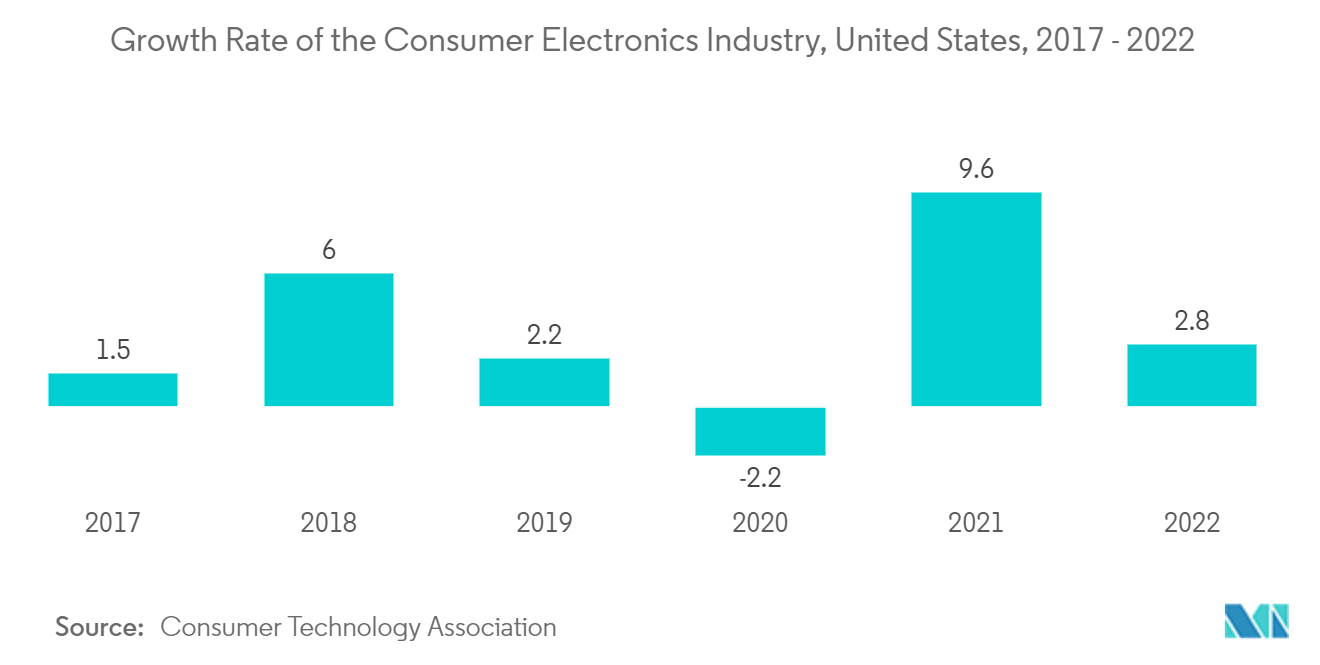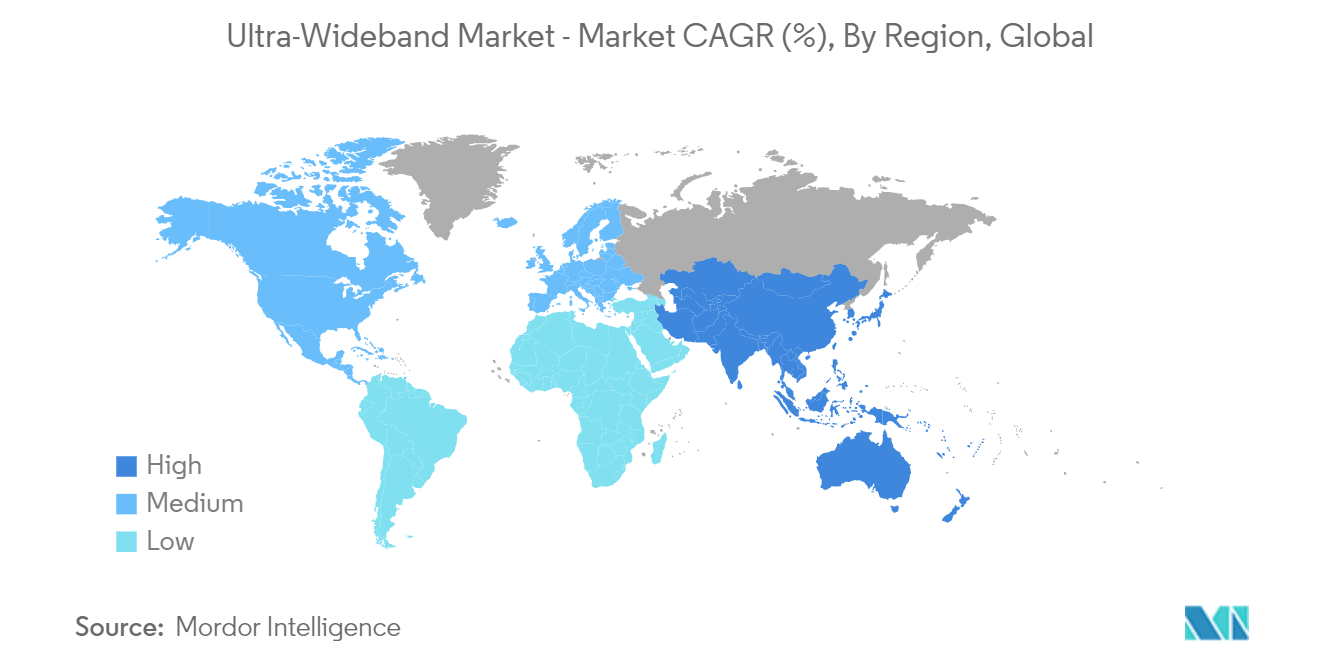Market Trends of Ultra-Wideband Industry
Consumer Electronics to Hold Significant Market Share
- Ultra-wideband (UWB) technology has been used in a lot of consumer electronics in the past few years because it can send and receive high-speed data wirelessly. Ultra-wideband technology is used a lot in Apple, Samsung, and Google Pixel high-end smartphones, some high-end laptops (Lenovo), speakers (HomePod Mini), and wearable devices. It is also being used more and more in smart home applications, which gives the UWB market in consumer electronics a lot of room to grow in the next few years.
- In the past few years, UWB technology has become more popular in smartphones. In March 2023, Samsung launched the Exynos Connect U100 chip for UWB capabilities. The new Samsung chip combines flash memory, radio frequency, a baseband, and power management technology onto a single chip, making it suitable for compact devices, like the next generation of the Galaxy SmartTag+. The chip also has an onboard scrambled timestamp sequence (STS) function, a physical cryptographic technique allowing device-level encryption for the time stamps of data packets.
- UWB technology is also being marketed as a way to track personal items for different consumer applications. Wallets, keys, and other personal items with a UWB tag can be found with a smartphone that has an ultra-wideband chip built in. UWB tags provide highly accurate, directional, and low-latency positioning.
- Smartphones are thought to have the largest share of shipments because they are so popular in places like China, India, the United States, and other places. Even though not all smartphones have UWB technology, many companies, including Google, Samsung, and Xiaomi, have released products with UWB technology since the iPhone 11 came out in September 2019.
- For instance, in June 2023, NOVELDA unveiled the world's lowest-power ultra-wideband (UWB) radar sensor. This radar is designed to operate on batteries with an astonishingly low power consumption below 100 microwatts. The final product will launch in mid-2024. NOVELDA will also demonstrate its groundbreaking NOVELDA UWB Proximity Sensor and NOVELDA UWB Occupancy Sensor at Booth 709. Since there are a lot of sales of UWB-enabled smartphones, the shipments are thought to be higher than for IoT devices.
In the IoT, devices such as air tags, airpods, and those in the smart home market are considered.

Asia-Pacific is Expected to Witness Fastest Growth
- In the Asia-Pacific region, there are a lot of developing economies, like China, India, Taiwan, Japan, Vietnam, South Korea, and others. The region has been witnessing rapid industrial growth in developing countries. According to the GSMA, many Asia-Pacific countries have developed plans to assist Industry 4.0 in their marketplaces. Additionally, manufacturing and healthcare are the top sectors expected to immediately experience the benefits of Industry 4.0.
- Several local businesses have made low-power UWB wireless transceiver ICs that allow a new class of short-range wireless connectivity applications, such as IoT sensors that don't need batteries. UWB wireless transceivers offer continuous, rich data streaming as well as precise range and location with orders of magnitude more energy efficiency, latency, and throughput than Bluetooth Low Energy or ZigBee.This is because UWB technology lets wireless devices like sensors work without batteries and dramatically increases the battery life of electronic gadgets when combined with energy-harvesting technologies. This is why UWB technology is becoming more popular in the APAC region, where companies are putting an emphasis on energy-saving strategies.
- As the number of connected cars and electric vehicles on the market grows, regional UWB technology solution providers will have a chance to do business. Companies are partnering to develop UWB-enabled automobile products, which drive the APAC market. For instance, in July 2022, NXP Semiconductors and Taiwan's Hon Hai Technology Grove signed a memorandum of understanding to build platforms for a new generation of smart, connected automobiles that feature the NXP S32 domain embedded with UWB technology.
- Due to the growing need for UWB technologies in IoT devices, the use of IoT in the manufacturing and auto industries is creating an opportunity for the market. Also, Taiwan and China are important places for making chips, and India's mission to make chips would help the market for UWB technology chips in the region.

